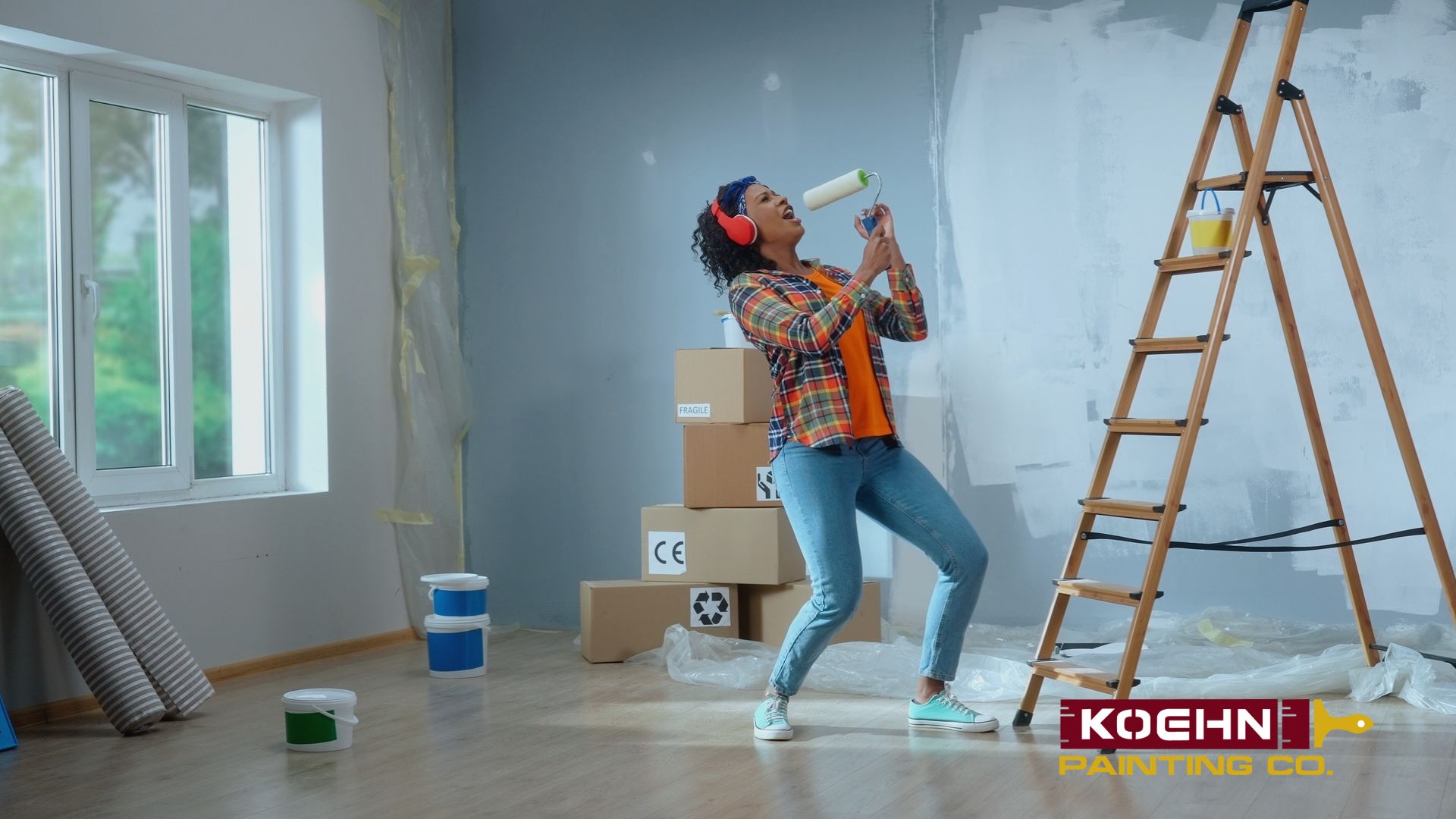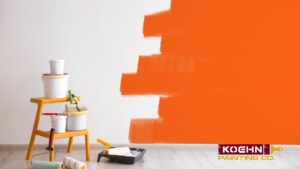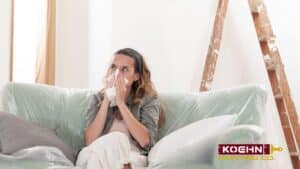Table of Contents
ToggleAre you considering giving your home a fresh coat of paint? Painting your house is an integral part of home maintenance, whether to enhance its appearance, protect it from the elements, or just give it a fresh start. But not everyone knows how to paint a house.
If you live in Wichita, Kansas, you know how unpredictable the weather can be. Painting a house is already time-consuming and knowledge-demanding, but the weather can make the process even harder. Hence, choosing the right time and method to paint your house can make a difference.
If you are wondering how to paint a house, there are some crucial things you need to know and steps you can take to ensure that your project planning embraces a stress-free painting experience. Remember, you are the key player in this process, and your decisions will shape the outcome.
This guide explains all the essential aspects of painting your house in Wichita, including when and how to do it, what options are available, and how to ensure a long-lasting finish through a smooth and enjoyable experience. You’re not alone in this; we’re here to support you every step of the way.
If you’re ready to transform your home, read on. From planning to execution, our guide is designed to make your painting project a breeze. Let’s get started.
Planning Your Exterior Painting Project
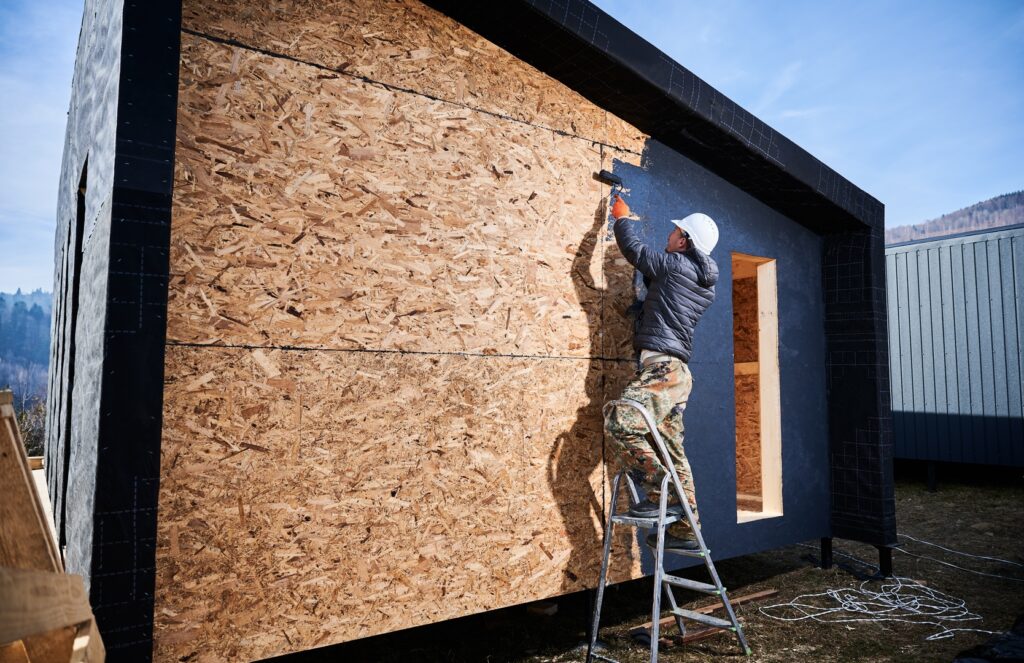
So, you want to start your exterior painting project. You may want a fresh coat of paint to revitalize your home’s health and look, improve its value for real estate purposes, or just change your house personality a little bit.
The exterior painting project is not just about a fresh coat of paint. It’s a strategic move that can increase your home’s value by up to 10%. Moreover, it can enhance energy efficiency, extend the lifespan of your siding, and provide overall protection while boosting your home’s aesthetic appeal.
Whatever the reason, there are a few vital issues to consider, and details to pay attention to that could completely change your experience.
Paint at the right time and conditions for quality and durability, use the proper tools and materials, and know how long exterior paint lasts are just some tips professionals usually give house owners. Let’s go through the process to understand better.
Assessing the current condition of your home
Timing and preparation are everything for the long-lasting finish you’re looking for. So, before you pick up a paintbrush, the first thing you need to do is consider the current condition of your home’s exterior.
Not all surfaces are the same to work on, but they all must be suitable for painting before starting. You should look for any signs of damage, such as cracks, peeling paint, or mildew. If you can identify these issues, this will help you address them before you start painting, avoiding finding troubles in the near future.
Exterior painters usually recommend cleaning the surfaces to ensure they are spotless. To do this, you can hire a professional for thorough cleaning or, if you want to do it yourself, consider:
- Using a power washer with pressure between 1,500 and 2,500 PSI.
- Hold the nozzle at a 45-degree angle and at least 12 inches away.
- Use a garden hose with a scrub brush for tight spaces or delicate areas
After this, you can fix any cracks or damage that you might find. If the surface isn’t 100% fine after cleaning, a stabilizing primer to remove old peeling or flaking paint, sand rough areas, and fill holes is a great idea.
This last step helps the paint stick better, making it last longer and creating a uniform base. You can also use protective sheets and tape for areas not to be painted.
Choosing the right time to paint
It’s super important to consider weather conditions when you’re about to do exterior painting. Temperature and humidity can highly affect the process and its overcoming. If you choose the right time, you can ensure proper drying and a smooth finish.
The best time to paint your house in Wichita is late spring or early autumn. The temperatures are typically mild, ranging between 50°F and 85°F, ideal for both water- and oil-based paints. Also, the optimal humidity you should expect ranges from 40-70% to avoid cracking or peeling.
Avoid painting during the peaks of summer or the depths of winter because extreme temperatures can affect the paint’s adhesion and drying process. Instead, schedule painting on clear, mild days for better results.
Also, avoid direct sunlight, use appropriate brushes, and maintain a “wet edge.” Always plan work according to the sun’s position and avoid windy days to control paint drying speed.
After this first step, you are ready to start focusing on what paints and colors you’ll like for your next painting.
Selecting the best paint and colors
The weather in the Midwest is constantly changing. This can be challenging for your exterior painting process, so choosing high-quality and weather-resistant paint is essential for Wichita’s climate.
Water-based paints require a warm environment above 50°F for proper curing, while oil-based paints are more tolerant of temperature variations but still need to avoid rain. You can also look for paints that offer UV protection to prevent fading and are resistant to mildew and moisture.
When selecting colors, consider your home’s style and the surrounding environment. Lighter colors can help reflect heat and keep your home cooler, while darker shades may absorb more head and fade faster.
Consider safety issues
Working with toxic paint and solvent fumes can cause headaches and other effects. Those who do the job are usually exposed to airborne toxins in other building materials such as drywall, insulation, etc. Painting processes can be risky if you don’t take the proper precautions.
Homes built before 1978 are likely to contain lead-based paint, which poses serious health risks if it deteriorates. When inhaled or ingested, lead dust can be harmful, so determine if your home contains lead-based paint.
To protect from toxic dust, wearing a mask, gloves, and safety goggles is recommended. Personal protective equipment is vital when working around paint. Consider using heavy-duty gloves to prevent dust from touching your skin and goggles to protect your eyes from dust and debris during some parts of the process.
Application techniques
For the best results, it’s recommended to apply the paint using high-quality brushes and rollers. For large, flat areas, you can consider using a paint sprayer to achieve a smooth and even finish.
Know that you should always apply paint in thin, even coats, starting from the top and working your way down to catch any drips. Painting in the right weather conditions and following the shade around your house can help the paint dry evenly and prevent issues like blistering or peeling.
If you’re excited about doing it yourself, you should know that the average cost ranges from $2,000 to $10,000, depending on size, surface condition, and paint quality. A basic job for a small house can be around $2,800, while an extensive one on a larger house can go up to $18,000. Paint prices range from $20 to $70 per gallon.
Exterior painting alone can be cost-effective and give you a sense of personal accomplishment. However, it requires time, specialized skills, and comfort working at height. Sometimes, the risks of mistakes can lead to additional costs or poor results.
Contact us here if you would like to find the best painting contractor for your residential or commercial painting needs.
Preparing the House for Interior Painting
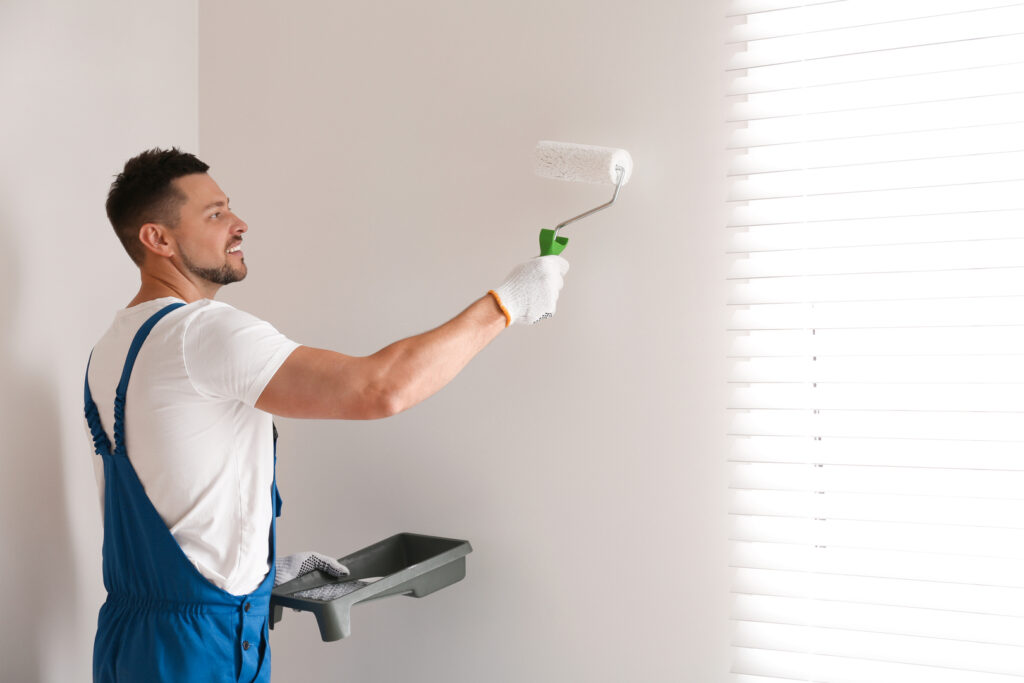
Interior painting preparation is just as important as exterior painting when reviewing how to paint a house. The beauty and value of your home not only rely on what can be shown on the outside; interior painting can also be beneficial both for your house maintenance and for your physical and mental health.
Proper preparation makes all the difference when transforming your daily spaces, whether refreshing a single room or undertaking a full interior makeover. Don’t be fooled by the thought that exterior painting needs all the attention; there are great painting tips but also common pitfalls you will find valuable about interior painting.
Interior painting can provide meaningful benefits:
- It increases the real estate value of your house, enhancing market value and making it crucial for resale.
- It improves indoor air quality because low-VOC and zero-VOC paints reduce harmful odors and chemicals.
- It reduces dust and dirt, acting as a repellent for homes with plaster walls.
- It conceals marks and stains, covering permanent marks and stains for a refreshed look.
- It protects interior surfaces, guarding against wear and tear, and moisture-related damages.
- It’s cost-effective remodeling, providing a remodel-like transformation at a fraction of the cost.
- It’s psychology-friendly. Yes, interior painting can affect your mood through certain colors, with lighter hues making spaces feel larger and vibrant colors adding energy.
After understanding why interior painting is as important as exterior painting in your project, let’s review the step-by-step of preparing your home for it, ensuring a joyful and long-lasting result.
Choose a paint color
Picking the perfect paint color can feel overwhelming with so many options available. To make it easier, view your color choices in your room’s natural and artificial light at different times of the day.
Grab some swatches and tape them to the wall, or use sample-size paint pots on a white poster board. You can even try peel-and-stick swatches.
Just have fun with color! Consider painting your trim and ceiling the same color as your walls or experimenting with different hues.
Choose a finish
Paint finishes range from flat (no shine) to high gloss, each with its own look and durability. Here are some key insights on them:
- Eggshell finishes, for example, are great for walls in living rooms and bedrooms because they are scrubbable yet hide flaws.
- For trims, satin or semi-gloss finishes are durable and provide a nice contrast.
- Flat paint is ideal for ceilings as it doesn’t reflect too much light and keeps the focus on the room.
Determine how much paint and primer you need
Paint calculators are great for figuring out how many gallons of paint you’ll need, generally enough for two coats. If you’re making a dramatic color change, consider tinting your primer to help block the old color.
Primer helps your paint stick better, covers stains, and ensures a smooth finish. It’s especially handy when switching from dark to light colors or painting over plaster.
Protect yourself
As in exterior painting, safety comes first! Wear goggles and a face mask or respirator while prepping and painting to protect yourself from dust and fumes. As mentioned before, many modern paints are low in VOCs, but keeping windows open for ventilation is still a good idea.
Also, look for information on your house’s year of construction, as houses built before 1978 may have lead paint. Yes, this also applies to interior paintings.
Prep your walls
Your walls need cleaning before painting, just like in outdoor painting. You can mix dish detergent and warm water to wipe them down. Also, any holes or cracks can be patched with joint compound, and you can sand the surfaces smoothly.
Remove the light switch cover, roll up the rugs, and move furniture to the center of the room. You want to cover everything if you don’t want a newly painted sofa and table.
You can use blue painter’s tape to clean lines and prevent paint from bleeding. It must be applied in small sections, pressed down firmly, and sealed with a putty knife or damp cloth. You want to let the tape set for 30 to 90 minutes before painting to achieve great results.
Let’s paint!
For a smooth process, you can start with the ceiling, move to the walls, and finish with the trim. Angled brushed to “cut in” is great around edges where walls meet the trim or floor.
For larger areas, you can use a roller with a half-to-one-inch nap and roll in a “W” pattern for even coverage or an 18-inch roller that covers more area quickly but requires upper-body strength.
After this, let the paint dry between coats and use long, single strokes for the trim to minimize brush marks. You can quickly dry spackling or drywall compound with a hair dryer; just avoid overheating!
There are many secrets like this for home interior painting that services won’t tell you, which you can leverage to improve your painting skills and see fantastic results.
Remove the tape and clean up
Once the final coat is partially dry (about 2-4 hours), gently remove the tape at a 45-degree angle to avoid pulling off any paint.
If you use latex paint, clean your brushes and roller with soap and warm water. If you use oil-based paint, just follow the instructions on the paint can.
Make sure your tools are clean and ready for your next painting project!
How to Paint a House Stress-Free
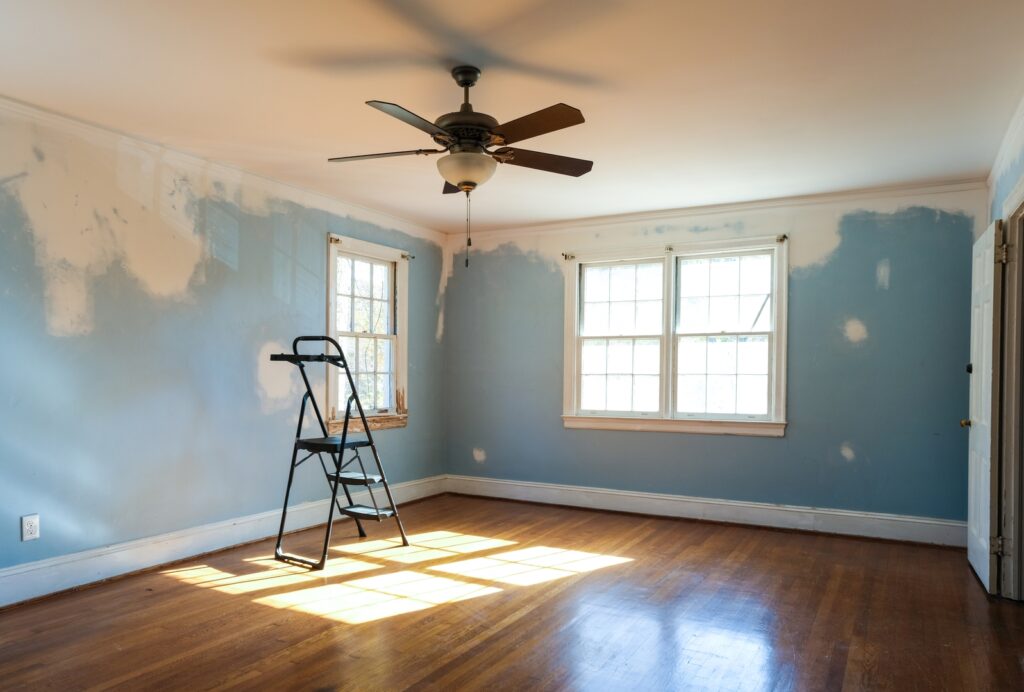
As artsy and fun as painting a house can sound, it’s also a process that requires precision, knowledge, and a deep understanding of weather, tools, and materials. Plus, it requires long-time experience. If you’re wondering how to paint a house without all this hassle, you might be in the right place.
Skilled interior painters in Wichita can be the answer to your questions. Providing more than just a service, partnering up with painting professionals like the ones at Koehn can transform your house and give you a relaxing experience.
Tackling challenges with innovative solutions, hiring a professional can ensure high-quality results even in difficult conditions. At Koehn, we use visualization techniques to plan and execute stunning transformations.
Our team professionally addresses some of the most common paint problems, such as blistering, chalking, peeling, and others that a non-experienced person can find while painting their houses. We use high-quality paints, sealers, and undercoats while meticulously removing loose paint and applying proper primers, among other things.
Koehn brings competitive pricing, providing excellent value for investment, reliability, and punctuality, respecting your time and schedule, quality materials, up-to-date trend knowledge, and decades of experience. Plus, we offer a 100% satisfaction guarantee and a free 1-year quality warranty to ensure peace of mind and confidence.
We understand the meaning of home—the power of color psychology and design aesthetics mixed with practicality and a healthy environment where you and your family can feel safe and enjoy your daily activities. A space dimension and a sensory experience that goes beyond visual appeal.
We not only know everything about exterior and interior painting, but we also align with your vision, customizing every work to be as unique as every homeowner and creating a cohesive and visually appealing space that you can call home. Discover the Koehn Painting difference – contact us today for a free estimate and step into a vibrant, freshly painted home.
